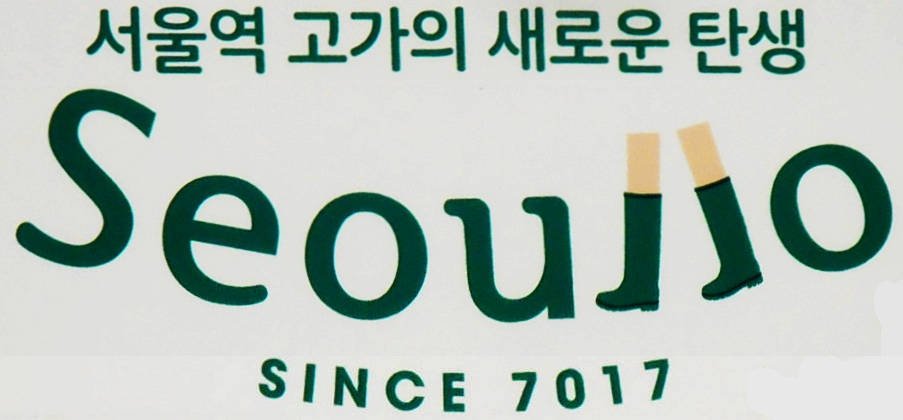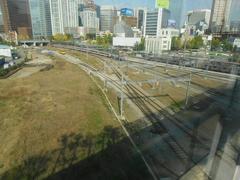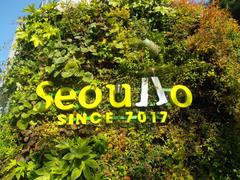
Seoullo 7017 Visiting Hours, Tickets, and Guide to Seoul Historical Sites
Date: 15/06/2025
Introduction
Seoullo 7017, Seoul’s acclaimed urban sky garden, exemplifies the city’s forward-thinking approach to sustainable urban renewal. Elevated above the bustling streets, this former highway overpass has been transformed into a lush pedestrian park, connecting neighborhoods, enhancing the urban ecosystem, and serving as a vibrant hub for culture, recreation, and community. Whether you’re a local resident, a history enthusiast, or a traveler seeking new perspectives on city life, this guide provides comprehensive information on Seoullo 7017 visiting hours, admission, accessibility, must-see features, and nearby historical sites.
(Wikipedia, MVRDV, Visit Seoul, Iconiq Taste)
Table of Contents
- Overview & Significance
- History and Urban Transformation
- Visiting Information
- Highlights and Must-See Spots
- Seasonal Events & Cultural Programs
- Practical Tips for Visitors
- Nearby Attractions & Historical Sites
- Frequently Asked Questions (FAQ)
- Conclusion
- References
Overview & Significance
Seoullo 7017—meaning “Seoul Road 7017”—draws its name from the overpass’s original construction year (1970), its rebirth as a park in 2017, and its 17 pedestrian connections. Stretching nearly one kilometer and rising 17 meters above street level, this elevated park offers panoramic city vistas, a diverse array of over 24,000 plants across 228 species, and a living example of how urban infrastructure can be repurposed to create vibrant community spaces.
Designed by the renowned Dutch architecture firm MVRDV, Seoullo 7017 has become a green lung for central Seoul, supporting biodiversity, pedestrian connectivity, and neighborhood revitalization. Its success has influenced urban policy both locally and internationally, serving as a model for sustainable city planning and inclusive community engagement.
(Architectural Review, Knowledge Hub)
History and Urban Transformation
From Highway to Sky Garden
- 1970: Construction of the Seoul Station Overpass to ease traffic and connect rapidly expanding neighborhoods around Seoul Station.
- 2006: Overpass closed due to safety concerns as the structure aged and urban priorities shifted.
- 2014-2017: Inspired by projects like New York’s High Line, Seoul’s leadership (notably then-mayor Park Won-soon) initiated the transformation into a pedestrian park. The design competition was won by MVRDV, who envisioned the space as a “plant village” with thematic clusters of Korean and international flora.
- 2017: Seoullo 7017 opened to the public, becoming a symbol of urban regeneration and ecological stewardship.
(Wikipedia, The Soul of Seoul, MVRDV)
Visiting Information
Hours & Tickets
- Opening Hours: Generally open daily from 10:00 AM to 10:00 PM. Some sections and events may offer 24-hour access; check official listings or information centers for details.
- Admission: Entry is free. No tickets are required.
How to Get There
- Subway:
- Seoul Station (Lines 1, 4, Airport Railroad; Exits 2 & 8) offers direct access.
- Hoehyeon Station (Line 4, Exit 3) and Namdaemun Market also provide convenient entry points.
- Bus: Numerous city buses serve Seoul Station and adjacent neighborhoods.
- Taxi: Drop-off at Seoul Station or Malli-dong.
Accessibility
Seoullo 7017 is designed for inclusivity, featuring:
- Ramps and elevators for wheelchairs, strollers, and travelers with mobility needs.
- Accessible restrooms, nursing rooms, electric wheelchair charging, and information desks with multilingual support.
- Barrier-free paths and clear signage throughout.
(Seoul Solution, Seoul Danurim)
Facilities & Amenities
- Benches and shaded rest areas
- Free Wi-Fi
- Security cameras and patrols
- Drinking fountains, vending machines
- Information centers (with maps & event updates)
- Coin lockers at Seoul Station
- Pet-friendly (leashed pets allowed)
Highlights and Must-See Spots
Sky Garden and Flora
Seoullo 7017 features over 24,000 plants, including cherry, maple, and fruit trees, plus labeled pots with QR codes for botanic learning. Themed clusters reflect Korea’s native flora and offer a changing landscape through the seasons.
Peeping Pots
Three interactive “Peeping Pots” along the walkway provide unique visual and auditory experiences:
- View Peeping Pot: City panoramas
- Imagine Peeping Pot: Creative, immersive visuals
- Listen Peeping Pot: Urban soundscapes
Yunseul Art Installation
Located at Malli-dong, this mirrored installation invites playful interaction and reflection, blending art and city life.
Seoullo Gallery
Contemporary art exhibitions and rotating displays from leading Korean artists.
Pebble Foot Pool
A shallow pool to cool your feet—especially enjoyable in summer.
Nighttime Ambience
After sunset, LED lights and color-changing water features create a magical atmosphere, making evening strolls especially memorable.
Seasonal Events & Cultural Programs
- Annual Festivals: Including international forums, concerts, markets, and art events.
- Public Art & Performances: Seoullo Gallery, Yunseul installation, and live performances enliven the park.
- Guided Tours: Themed tours explore the park’s flora, history, and connection to Seoul’s heritage.
(Visit Seoul, Seoullo 7017 Walking Tours)
Practical Tips for Visitors
- Best Times: Early mornings and late evenings are quieter and more comfortable, with fewer crowds.
- Weather: Be prepared for Seoul’s seasonal changes; spring and fall are ideal.
- Photography: Great for cityscape shots, especially at sunset/night.
- Food: Café stands on the walkway; numerous restaurants and street food at Namdaemun Market and Seoul Station.
- Pets: Allowed if leashed and cleaned up after.
- Nearby Storage: Coin lockers at Seoul Station.
Nearby Attractions & Historical Sites
- Namdaemun Market: Seoul’s largest traditional market for shopping and street food.
- Sungnyemun Gate (Namdaemun): Historic city gate and national treasure.
- Seoul Station: Major transport hub with shops and dining.
- Hanyangdoseong (Seoul City Wall): Ancient wall remains nearby.
- Culture Station Seoul 284: Former railway station turned cultural venue.
Frequently Asked Questions (FAQ)
Q: What are Seoullo 7017’s visiting hours?
A: Open daily from 10:00 AM to 10:00 PM; some areas may offer 24-hour access.
Q: Is there an entry fee?
A: No, entry is free.
Q: How do I get there?
A: Seoul Station (Lines 1, 4, AREX), Hoehyeon Station (Line 4), and city buses provide easy access.
Q: Is Seoullo 7017 wheelchair accessible?
A: Yes, with multiple ramps and elevators.
Q: Are pets allowed?
A: Yes, leashed pets are welcome.
Q: Are there guided tours?
A: Yes, themed walking tours are available, often including nearby historical sites.
Conclusion
Seoullo 7017 is a testament to Seoul’s commitment to sustainable, inclusive, and culturally rich urban living. As a model of urban regeneration, it connects the city’s past and future, offering residents and visitors a refreshing oasis above the city streets. With free entry, ease of access, and a diverse range of experiences, Seoullo 7017 is a must-see destination—whether you’re seeking tranquility, inspiration, or a deeper understanding of Seoul’s dynamic history.
Plan your visit during quieter hours, explore nearby historical sites, and consider joining a guided tour for a richer experience. Download the Audiala app for real-time updates and curated walking tours, and follow official Seoul tourism channels for event news and tips.
References
- Wikipedia
- MVRDV
- Iconiq Taste
- Knowledge Hub
- Visit Seoul
- The Soul of Seoul
- Korea Trip Guide
- Infra-Structures
- Use Metropolis
- Seoul Solution
- Korea Travel Post
- Visit Seoul (Must-See Spots)
- Visit Seoul (Walking Tour)
- Visit Seoul (Cultural Events)
- Kojects
- Korea JoongAng Daily
- Seoul Danurim
- Wanderlog














































































































































































































